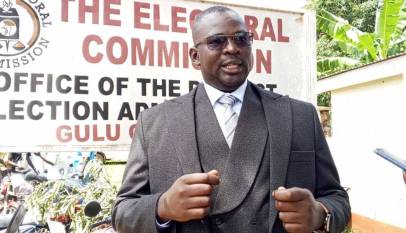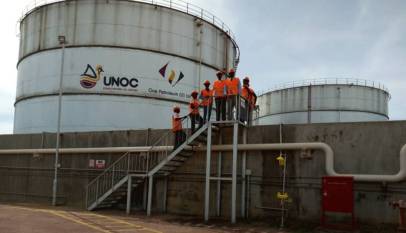Schools Under Spotlight Over Deadly Swimming Pools, Student Safety
A series of tragic student drownings in Ugandan schools has sparked public outrage and renewed calls for government regulation of swimming facilities.
In the past three months alone, two learners have died in school swimming pools, including incidents at Seeta High School and St. Mary’s College, Kisubi. Yet, these are not isolated cases; swimming pool-related deaths in schools date back as far as 2012.
Besides deaths recorded in school pools, National data shows an average of eight to nine drowning deaths daily, with children under 10 years accounting for roughly 20 per cent of fatalities.
A study by Makerere University’s School of Public Health estimates that around 3,000 lives are lost to drowning each year. The research indicates that 11 per cent of victims are aged 0-4, 16 per cent are 5-14, and 38 per cent are 15-29, highlighting the vulnerability of children and young adults nationwide.
Despite the growing concern, the Ministry of Education has remained largely silent. Hasadu Kirabira, the chairperson of the National Private Education Institution Association (NPEIA), described the deaths as tragic but preventable if schools and authorities diligently fulfil their responsibilities.
“It is devastating to lose a child in ways that could be avoided if proper measures were in place. I am not blaming schools or anyone, but we must learn from these incidents and take concrete steps to improve safety,” Kirabira said.
He noted that most reported swimming pool deaths occur in high-end schools that promote pools as premium facilities to attract affluent families. Ironically, these same pools have become hazardous due to poor supervision, untrained staff, and the absence of enforceable safety standards.
Kirabira likened the incidents to past school fire tragedies, suggesting that some drownings may not be purely accidental. Internal negligence and external interference could play a role, he said, urging school authorities to investigate thoroughly.
Sam Bambanza, the Executive Director of Safe Transport and Survivors Support Uganda, and a drowning prevention advocate, highlighted a worrying lack of certified lifesavers and trained supervisors in school pools.
He explained that in other countries, permanent lifesavers are stationed at poolside, closely monitoring each learner until sessions conclude. In Uganda, many pools remain unattended or are managed by unqualified instructors.
Bambanza emphasised that every school operating a pool should employ at least two to three certified lifesavers, depending on the number of students.
Swimming pools, he argued, should never be treated as marketing tools or decorative features but as sports and safety facilities that demand strict oversight. Parents, too, bear responsibility: they must declare medical conditions such as asthma, which could place a child at heightened risk during swimming activities. In a recent case, a child with asthma reportedly participated in lessons, contributing to a fatal outcome.
Bambanza also faulted the police for failing to publish findings from drowning investigations, leaving families and the public uncertain about causes and preventive measures.
Critics suggest that the government’s silence may be influenced by a conflict of interest, as several elite schools with swimming pools are linked to influential figures, including the Minister of Education.
Despite public concern, the Ministry of Education and Sports has not issued any safety directives or public statements. Even the ministry spokesperson, Dr Denis Mugimba, has failed to respond to repeated journalist inquiries, further straining public confidence.
Swimming has also become a growing business in Uganda’s education sector. Many schools, from nursery to secondary levels, promote swimming as a mark of prestige and an additional revenue stream. Yet, in the rush to capitalise on this trend, safety is often overlooked.
Temporary setups, including inflatable pools, shallow concrete basins, and makeshift tarpaulin-lined tanks, lack proper lifesaving equipment, hygiene protocols, and trained instructors.
Police spokesperson Kituuma Rusoke stressed the need for schools to install CCTV around pools and warned that lifeguards acting as trainers could become distracted from their primary supervision duties. He added that pool management must enforce clear usage protocols to prevent overcrowding and lapses in oversight.
Dr Esther Bayiga, of Makerere University’s Trauma, Injury and Disability Prevention Unit, noted that nobody currently certifies lifesavers in Uganda, despite their critical role in drowning prevention. She added that while research has been conducted around natural water bodies, little attention has been given to safety in swimming pools.
Some incidents have also been linked to parental negligence. For instance, in a recent Busabala case, two children aged six and nine went to swim alone, resulting in the death of one child.
Luke Owoyesigyire, the deputy Kampala Metropolitan Police spokesperson, urged parents to closely supervise children during water activities to prevent such tragedies.
Bryan White Further Remanded to February 2026
Two More Candidates Quit Laroo-Pece Division MP Race
Bryan White Further Remanded to February 2026
Two More Candidates Quit Laroo-Pece Division MP Race
Parliament Okays UGX 7 Trillion Loan For UNOC’s Operations
Bryan White Further Remanded to February 2026
The Makindye Chief Magistrate’s Court has adjourned the human sacrifice case involving jai…
Now On Air – 88.2 Sanyu Fm
Get Hooked Right Here
DON'T MISS!!!
Uganda Law Society Appeals for Swift Supreme Court Ruling in Kazinda Case
The Uganda Law Society has appealed to the Chief Justice, Alfonse Owiny-Dollo, and the Justices of the Supreme Court to urgently deliver a long-awaited judgment


























